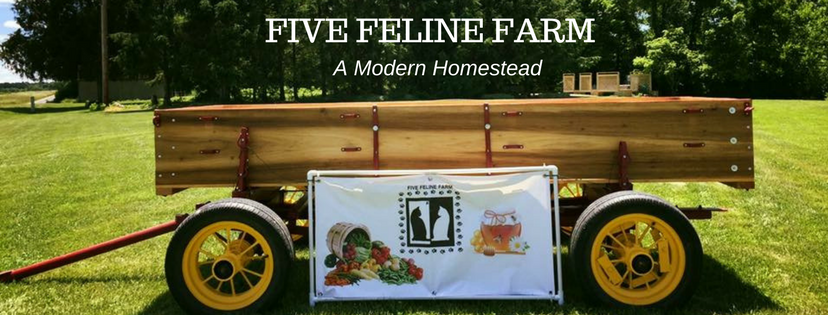Do wooly worms, persimmon seeds, and black walnuts know the future?
Here in the Northern Hemisphere, the U. S. Midwest, to be precise, we are entering the winter season. The topic on everyone’s mind seems to be what the winter weather will bring us.
Before potential winter storms are upon us, we look to the forecasters to get an idea about what is coming.
Will it be frigid?
Will there be deep snow or ice?
Could we get lucky and have a mild winter, cold enough to need a coat and kill the pesky insects, but not bitter?
We look to folklore for fun predictions about winter in my rural area. Every year, at Five Feline Farm, we use some of these traditions to predict the upcoming winter weather. Then we post about it on social media. This year, for some unexplained reason, the post went viral on Facebook. Shares and comments in the thousands.
People are interested in knowing what to expect, even if the source of information is unscientific weather predictions.
As winter approaches, there is always an air of excitement around the season’s first snowfall. This excitement seems to be present whether you like snow or hate it. Everyone makes a last-minute trip to the store to buy milk, bread, and toilet paper. Everyone but me, that is. I am always well-stocked on all three.
Back to the folklore.
Persimmon seeds
In the fall, the fruit of wild persimmons turns a gorgeous burnt orange color. Until after the first frost, they are too astringent to eat. But you can still gather a few for winter weather predicting. There are several seeds inside each fruit. Collect one from several different fruits for the most “scientific” results. We chose four persimmons this year, using one seed from each.
Squeeze or peel back the flesh and remove a seed. Clean it thoroughly. The sticky flesh clings to the seed, so it must be clean and dry; otherwise, it is too slippery to cut. To view the kernel, the seed must be cut in half lengthwise. This is not an easy task. The trick is to cut the seed without cutting off the tip of a finger. The seed is very narrow when held on the edge and very small in width. Plus, the seeds are hard.
My technique is to hold the seed with a pair of needle-nosed pliers and cut down through the seed with a very sharp razor blade. This usually results in a neat slice with the two halves showing the kernel inside.
Now that you have the seeds cut in half observe the kernel. You will find one of three distinctive shapes: a fork, a spoon, or a knife. This is where the prediction happens.
The spoon symbolizes a snow shovel and indicates a snowy winter. The knife forecasts bitter cold as in “cutting” like a knife. The fork is supposed to predict a milder winter; the lighter snows “fall” through the tines of the fork.
Not content with one folklore forecast, we look for more folklore to confirm our prediction.
Wooly worms
Wooly worms are the larval stage of the Isabella Tiger Moth. They may also be called “banded wooly bear” or “wooly bear.” We call them “wooly worms.”
Wooly worms are prevalent in the Midwestern United States during Fall. Folklore weather forecasters observe the color and markings of the exterior or coat of these worms for their forecast. Colors range from white or cream-colored to very dark brown. The darker the color, the colder the winter weather predicted. Light-colored worms indicate snow.
Wooly worms may also have bands of color. The position of the bands coupled with the color is used to forecast the progression of weather over the winter season.
For example, you may find a wooly worm with dark bands at the ends and lighter in the middle. This would forecast cold weather early in the winter, snow mid-season, and cold again near the end. Usually, several wooly worms are observed, and percentages are used rather than relying on one worm.
Wooly worms and persimmon seeds are not the only folklore indicators of winter weather.
Nut producing trees
Trees that produce nuts, like black walnuts, acorns, hickory nuts, etc., tend to vary in the number of nuts produced each year. Some years, for example, the black walnuts will be sparse on each tree with no more than two in a cluster. Other years, the nuts develop in groups of four or five, weighing down the branches.
According to folklore, a harsh winter season is coming when the nuts are plentiful. The logic behind this prediction is that nut-gathering animals, like squirrels, need a large food store to make it through the winter. They will be unable to forage any other provisions, so they must rely on their stockpile to survive.
So what does all this mean for the winter of 2021–2022?
Below is the forecast from Five Feline Farm, as predicted by persimmon seeds, wooly worms, and nut trees.
The persimmon seeds observed at Five Feline Farm are shown above. (Again, note the blue color was added to enhance the visibility of the kernel, persimmon seeds are naturally white or creamy inside.) Every single seed had spoon-shaped kernels this year. This is unusual. Typically there is a predominate utensil, but others are also present.
The wooly worms are all black and dark brown.
The black walnut trees are loaded with nuts. The squirrels are busy hiding away all the nuts they can carry from morning till night.
So the official winter weather prediction from Five Feline Farm after reviewing these “facts”: we will have winter.





